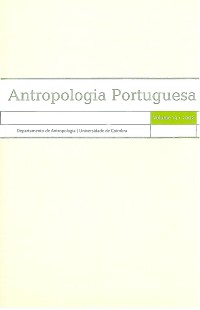Please use this identifier to cite or link to this item:
https://hdl.handle.net/10316.2/41266| Title: | Pathological evidence in the Pre-Columbian human remains from the Lee Collection (Jamaica) | Authors: | Santos, Ana Luísa Allsworth-Jones, Philip Rodriques, Esther |
Keywords: | Taino/Arawak;cranial modification;treponematosis;arthritis;dental agenesis;Jamaica;Taino/Arawak;modificações cranianas;treponematoses;agenesia dentária;Jamaica | Issue Date: | 2002 | Publisher: | CIAS - Centro de Investigação em Antropologia e Saúde | Abstract: | The Archaeology Laboratory in the Department of History and
Archaeology at UWI has housed the James W. Lee Collection of Arawak
artefacts and human remains since 2000. A complete database is being
prepared by two of the authors (PAJ and ER) as part of a project under the
auspices of the Jamaica Bauxite Institute. The collection spans a total of
265 sites and was collected over a 27 year period (1959-1986). Eight caves
and 16 open-air sites produced human remains, with a minimal number
of 46 individuals. Despite adverse taphonomic factors, age and sex
estimation, metric analyses, and pathological case descriptions, could be
carried out in a number of cases. This paper will focus on the
paleopathological evidence. Two skulls (EC12, Bull Savannah #2 cave, St.
Elizabeth, and CC15, Taylor's Hut cave, Clarendon) were artificially
modified. CC15 was found inside a bowl. At E12 (Black River West) an
increase in thickness in two fragments of tibiae and in one fibula is
regarded as a pathological condition, possibly related to treponematosis.
Signs of degenerative joint diseases, such as eburnation in an atlas and in
a humerus, and osteoarthritis in several bones, were detected at J1
(Hartfield) and JC7 (Spot Valley cave). Finally a case of agenesis exists in
the right decidual incisor in a mandible of a juvenile with an age-at-death
around 4 years (Y4, Rio Nuevo, St. Mary). This study is a contribution to
the understanding of extinct pre-Columbian populations in the
Caribbean region. Os artefactos e os restos osteológicos recolhidos, entre 1959 e 1986, por James Lee em 265 locais arqueológicos transitaram em 2000 para o Archaeology Laboratory, Department of History and Archaeology, University of West Indies, Jamaica. Num projecto apoiado pelo Jamaica Bauxite Institute dois dos autores (PAJ e ER) preparam uma base de dados da coleção. Em oito grutas e 16 jazidas a céu aberto existiam restos humanos que correspondem a um número mínimo de 46 indivíduos. Apesar da adversidade da tafonomia puderam ser avaliados parâmetros paleogeográficos e referenciadas algumas patologias: modificações em dois crânios (CC15, Gruta de Taylor's Hut, e EC12, Gruta de Bull Savannah #2) um dos quais foi encontrado dentro de um vaso; evidências prováveis de treponematoses em fragmentos de dois fémures e duma tíbia de E12 (Black River West); sinais de doenças degenerativas das articulações, nomeadamente eburnação num atlas e num úmero, no material proveniente de J1 (Hartfield) e de JC7 (Gruta de Spot Valley); e, agenesia do incisivo direito decidual na mandíbula de uma criança com cerca de 4 anos de idade à morte (Y4, Rio Nuevo). Este estudo é, assim, uma contribuição para o conhecimento das populações pré-Colombianas extintas das Caraíbas. |
URI: | https://hdl.handle.net/10316.2/41266 | ISSN: | 0870-0990 2182-7982 (digital) |
DOI: | 10.14195/2182-7982_19_10 | Rights: | open access |
| Appears in Collections: | Antropologia Portuguesa |
Files in This Item:
| File | Description | Size | Format | |
|---|---|---|---|---|
| pathological_evidence.pdf | 2.51 MB | Adobe PDF |  |
Items in DSpace are protected by copyright, with all rights reserved, unless otherwise indicated.
